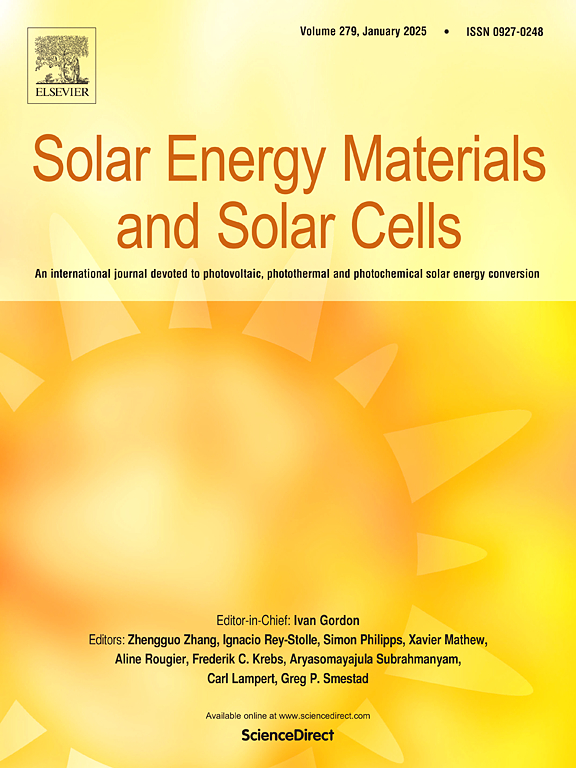应用于 CPV 的双轴太阳能跟踪器的模型参考自适应控制 (MRAC)
IF 6.3
2区 材料科学
Q2 ENERGY & FUELS
引用次数: 0
摘要
在这项工作中,针对双轴太阳能跟踪器原型开发了 MRAC 辅助太阳能跟踪器在太阳能轨迹跟踪任务中的行为模拟,该原型具有能够支持光伏、CPV 和 HCPV 类技术的结构和性能特征。通过开发由两个阶段组成的实验方法,对该建议进行了数值验证。第一阶段是对 MRAC 辅助太阳能跟踪器进行测试,以重现太阳能轨迹(通过离线数值方法获得),分别有干扰注入和无干扰注入(动态相当于现实中的风载荷)。另一方面,在第二阶段,复制了第一阶段的测试条件,但使用了一个简单的 PID 型控制器,对每种替代方案的性能进行了分析和比较,即跟踪误差或指向精度。结果表明,在有利条件下,两种方案都能在测试中发挥作用。然而,在有干扰的条件下,可以注意到 MRAC 比 PID 控制减少了约 87% 的跟踪误差。本文章由计算机程序翻译,如有差异,请以英文原文为准。
Model Reference Adaptive Control (MRAC) for dual-axis solar tracker applied in CPV
In this work, the simulation of the behavior of an MRAC assisted solar tracker in solar trajectory tracking tasks has been developed for a prototype of a two-axis solar tracker that presents structural and performance characteristics capable of supporting PV, CPV, and HCPV-type technology. The proposal is numerically validated by developing an experimental methodology consisting of two stages. The first stage is associated with developing tests of the MRAC-assisted solar tracker to reproduce a solar trajectory (obtained offline by a numerical method) with and without the injection of disturbances (with dynamics equivalent to wind loads in reality), respectively. On the other hand, in the second stage, after replicating the conditions of the tests of stage one but with the assistance of a simple PID type controller, the analysis and comparison of the performance of each alternative is carried out, the above, in terms of tracking error or pointing accuracy. The results show that both alternatives are functional in the development of tests under favorable conditions. However, under conditions with disturbances, it can be noted that the MRAC reduces the tracking error by around 87% compared to PID control.
求助全文
通过发布文献求助,成功后即可免费获取论文全文。
去求助
来源期刊

Solar Energy Materials and Solar Cells
工程技术-材料科学:综合
CiteScore
12.60
自引率
11.60%
发文量
513
审稿时长
47 days
期刊介绍:
Solar Energy Materials & Solar Cells is intended as a vehicle for the dissemination of research results on materials science and technology related to photovoltaic, photothermal and photoelectrochemical solar energy conversion. Materials science is taken in the broadest possible sense and encompasses physics, chemistry, optics, materials fabrication and analysis for all types of materials.
 求助内容:
求助内容: 应助结果提醒方式:
应助结果提醒方式:


